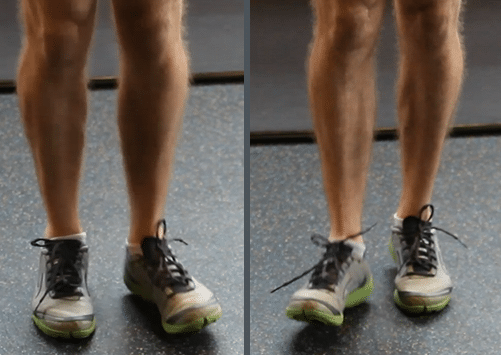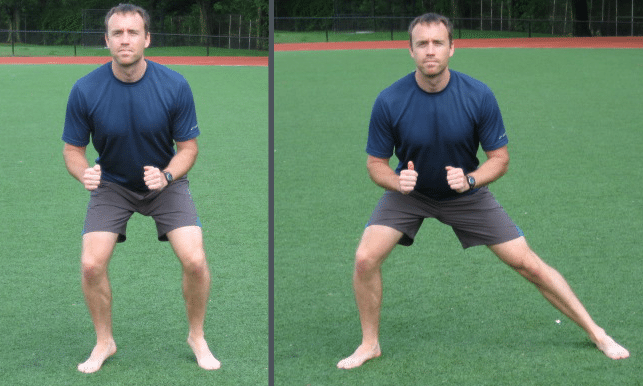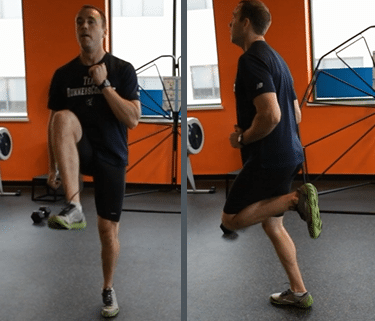There are many different philosophies on warming up before a workout or race that on a starting line, you could look around to the thousands of runners in front of and behind you and not a single one of them went through the exact same routine to prepare to run the race.
There are some people who prefer a 3-4 mile warm up while others don’t like to warm up more than a few minutes. There are runners who eat a hearty breakfast a few hours before a race while others can’t manage to choke down more than half of a protein bar.
In the good ol’ days before there was a plethora of science behind the warm up, runners warmed up in every way imaginable, including punching their thighs to effectively tenderize the muscles (Dick Beardsley, former world record holder in the marathon).
The purpose of this article is not to discuss the science and theory behind why a steady easy run or dynamic drills and strides is important before a race or workout. We’ve covered the theory and science behind the warm-up quite in-depth already. If you’re interested, you can read about the purpose of dynamic warm-ups here and 3 common myths of warming up here.
Instead, we want to help you connect the theoretical to the practical and show you the exact pre-race warm-up routine of one elite runner.
This article is to show you Coach Sarah Crouch’s personal warm up routine, a routine that she’s found to be very successful in her own racing career.
A few disclaimers before getting started:
1) Do not immediately implement this warm up into your next race, especially if you are currently using a much shorter or simpler warm up plan. Rather, slowly begin to introduce a longer warm up, drills and strides into your pre-workout routine and when you are comfortable and accustomed to them, introduce them into your pre-race routine.
2) What works for me may not necessarily work for you, feel free to play with it a little. For instance, if you don’t like eggs, substitute something else with protein, like toast and peanut butter instead.
3) Expect stabilizer and other rarely used muscles to be sore. In particular, the gracilis and sartorious (adductors of the inner thigh) will be sore from lateral motion if your body is not used to it.
Elite runner warm-up routine
Without further ado, here is: “a race day in the life…” for a race that starts at 8:00am
5:00am: wake up
5:15am: half mile “shake-out” jog (what is a shakeout jog and how can it improve performance)
6:00am: Eat breakfast, something simple like tea/toast + ½ egg for protein, and 12-16 ounces of water
6:00-7:00 put on uniform, relax, listen to music, depart for race
7:10am: Warm up at 8:00 pace for 24 minutes with 8 X 20 second surges last mile, remove outer sweats
7:35am: Drink 2-6oz water + PowerAde and start Drills
Warm-up drills
*All drills shown here are part of our strength training for runners and improving running form course
Rotational leg swings, 20 per leg (holding onto a waist-high object and simply swinging the legs to and fro)

60 steps “ankling”

30 lateral steps

40 high knees + butt kicks (high knees focus on driving the knee as far up in front of you as possible in a quick cadence, butt kicks focus on flexion of the knee, effectively stretching the quad with each step, also at a quick cadence)

7:45am, start series of strides to help get the blood flowing and heart pumping for a strong start:
- 4X20 second strides @ 10k effort (more water/PowerAde, 30 steps ankling and high knees)
- 4X20 second strides @ 5k effort (1 more set laterals)
- 4X20 second strides @ 1500m effort
7:55am: Remove Sweats, a few final short accelerations, race!
I have found that it is best to start a race feeling overly warmed up rather than not warm enough. Although it may seem like a lot of pre-race work, the benefit of strides and dynamic drills will become evident in the first mile of the race when what once felt like a shock to the body becomes a comfortable pace relative to the explosive, fast-twitch dynamic drills and strides.







